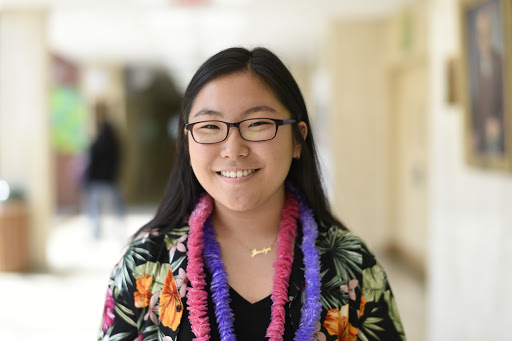South Korea and U.S. Agreement on Shared Defense Costs

Joselyn Kim ’19 shares her thoughts on Trump’s policy towards allies like South Korea, and she reflects on another alternative as a Korean American.
It started with bloodshed. The alliance between the United States and South Korea stems from after World War II when the relationship of U.S. General MacArthur and South Korean President Rhee was established. When the 38th Parallel officially split North and South Korean forces, the North proceeded to attack the South, prompting the U.S. to swiftly swoop into the South’s defense.
An alliance was born. Today, it is referred to as ‘an alliance formed in blood’ in which the United States and South Korea has an agreement to defend each other in the event of an attack. The Special Measures Agreement (SMA) outlines the South Korea’s contributions to the costs of the U.S. military presiding in S.K. Since 1991, this relationship has been kept intact, and is updated every five years. Now that it is time to renew the deal again, the two leaders must meet to discuss the new SMA. In the recent meeting between President Trump and President Moon Jae-in, it has been reported that the White House has asked for about a 150 or 200 percent increase in South Korea’s contribution costs. This request for additional financial contributions is not unfamiliar but is still a huge contrast from South Korea meeting the costs halfway, as done in previous years.
Although Washington shows interest in renegotiating the agreement at each renewal with an increased cost towards South Korea’s part for American military defense, it has not been so drastic of a change since now. For reference, the SMA’s last renegotiation in 2013 stated South Korea’s initial contribution to have only jumped by approximately 6 percent. South Korea has demonstrated clear opposition to these policies being pushed by the Trump administration.
In recent months, several media outlets and commentaries have highlighted the fact that the figures the U.S. uses to show South Korea’s contribution is only a fraction of what South Korea actually contributes. For instance, a study conducted by the state-run Korea Institute for Defense Analyses found the unaccounted, indirect support provided by South Korea to amount to approximately 5.4 trillion won or 4.8 billion US dollars. Indirect support can range from free rent for military bases to no taxes, but the Trump administration does not seem to be giving them its necessary acknowledgment.
This news, however, is not new. Throughout the presidential campaign, there were many reports of President Trump’s consistent criticism on South Korea’s financial contributions to the alliance. Mr. Trump has carried this perspective onto his presidency, stating it was “peanuts compared to what the U.S. spends.”
President Trump having previously stated, ‘Biggest Problem, to me, in the world, is nuclear, and proliferation,’ he is clearly aware of the effect and dangers nuclear weapons can have. As a Korean American, it’s upsetting,” said Joselyn Kim ’19.
Opposition to Trump’s methods on his treatment of the U.S.’s alliances is stirring. U.S. Defense Secretary Jim Mattis has recently resigned due to his disagreement with Trump’s treatment of allies. “Increasing costs for South Korea is unnecessary. Not only does North Korea’s constant threats of using their thousands of nuclear weapons affect South Korea, but also the United States. President Trump having previously stated, ‘Biggest Problem, to me, in the world, is nuclear, and proliferation,’ he is clearly aware of the effect and dangers nuclear weapons can have. As a Korean American, it’s upsetting,” said Joselyn Kim ’19.
Losing an important alliance with South Korea may come at a significant cost. Although Seoul is capable of paying more into the costs of U.S. defense in their country, the Trump administration’s approach risks the U.S. strategic interests. Weighing the costs against the benefits, South Korea may begin to search elsewhere for an alliance more reliable, trustworthy, and apt towards its security needs.
Abigail Yoo is a Senior Staff Reporter and a Online Newspaper Editor for the ‘Science Survey’ as well as a Groups Section Editor for ‘The Observatory.’...
Taylor Chapman is the Editor-in-Chief of ‘The Science Survey’ and an Academics Section Reporter for ‘The Observatory.’ The learning experience...
